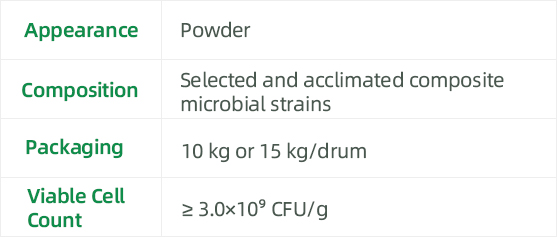MicroMotion®-AN is a blend of anaerobic bacteria, fungi, photosynthetic bacteria, lactic acid bacteria, methanogens, enzymes, and culture media selected from anaerobic environments. The strains in this product are sourced from extreme natural environments, making it highly adaptable to rapid emergency startup response.
Anaerobic microorganisms break down organic matter under the action of biological enzymes. The process begins with microbial hydrolysis, in which various anaerobic bacteria decompose complex organic polymers (e.g., carbohydrates, heterocyclic nitrogen/sulphur compounds) into substances that can be further utilized by other microbes. Acidogenic bacteria then convert sugars and amino acids into carbon dioxide, hydrogen, ammonia, and organic acids. These organic acids are further converted into acetic, butyric, and propionic acids along with ammonia, hydrogen, and carbon dioxide.
The final stage of anaerobic digestion is methane production. Methanogens convert these intermediate products into methane, carbon dioxide, and water.



